This Roasted Butternut Squash recipe is easy to make and packed with flavor. Learn the best way to cook it and enjoy it as a delicious side dish or nutritious addition to soups, bowls, pasta, and salads.
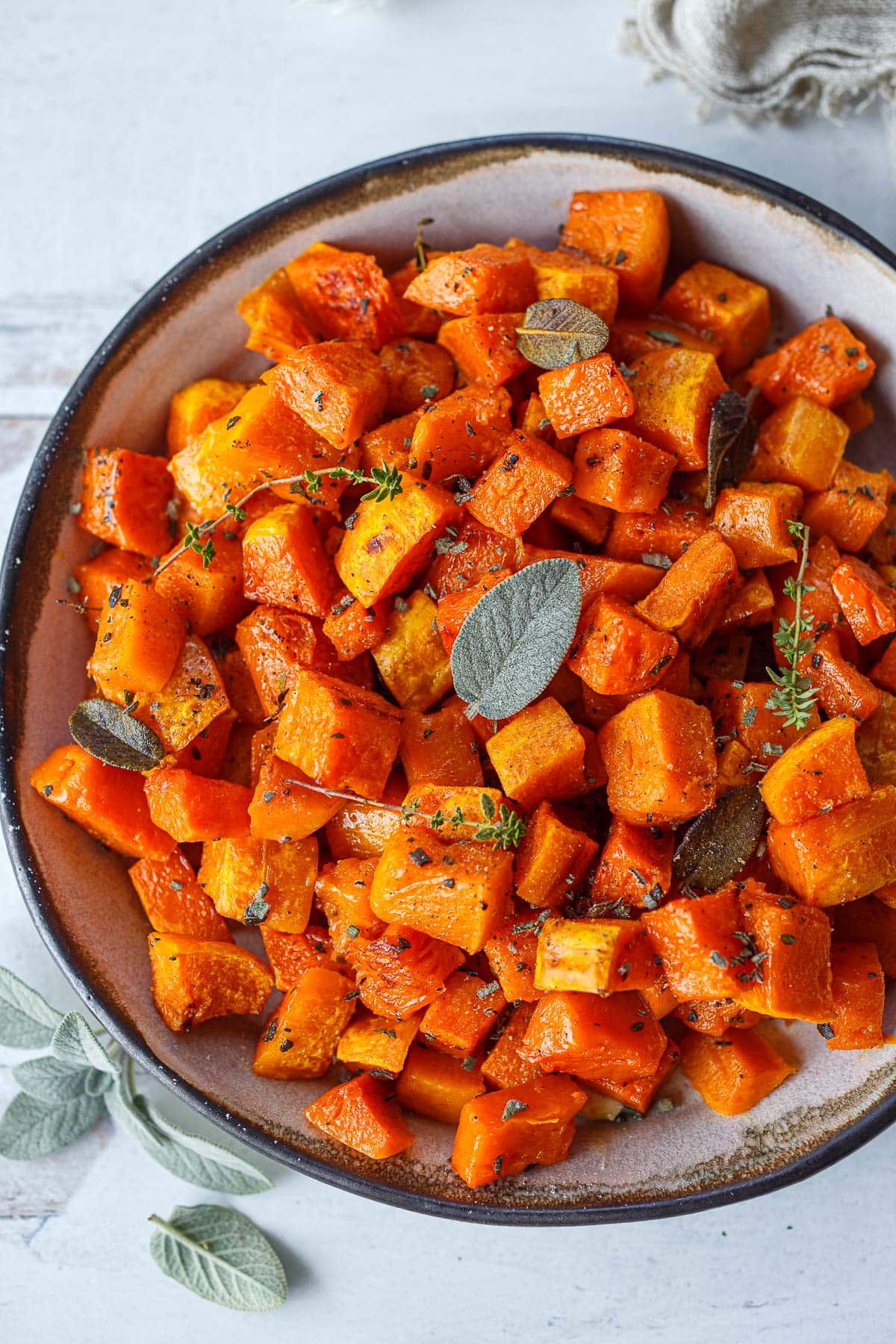
Roasted Butternut is one of our favorite easy side dishes. Whether for a holiday feast, a simple dinner, or part of weekend meal prep, this dish never disappoints. Its versatility and deliciousness will leave you wanting more. Keep it simple by drizzling olive oil and sprinkling salt, pepper, and fresh herbs or elevate it with aromatic spices and a sprinkle of toasted nuts. The choice is yours!
Why You’ll Love This
- A multitude of uses! Roasted butternut can be enjoyed as a side dish, or add it to a nourishing Buddha bowl, tossed with pasta or salad, or added to soups. Meal prep a batch of Roasted Butternut Squash to enjoy throughout the week!
- Caramelized and rich. When roasted, butternut squash is sweet and caramelized. Maple syrup enhances this sweet flavor. When serving, add a little butter to give the dish an extra rich flavor. Vegan butter or coconut oil works too!
- A healthy winter recipe. Butternut squash is rich in vitamins, minerals and antioxidants, especially vitamins A and C and beta-carotene. This low-calorie vegetable is rich with plant-based fiber and will nourish you inside and out.
- Keep it simple, or get creative! Simply tossing the squash with olive oil, salt, pepper and fresh herbs will result in a delicious dish, but you can easily dress it up with complex spices and serve with toasted nuts for a more elevated side.
- Easy recipe with minimal prep. Once the squash is cubed, simply toss with oil, syrup, salt, pepper, and herbs. Place in the oven and roast until rich in color and caramelized!
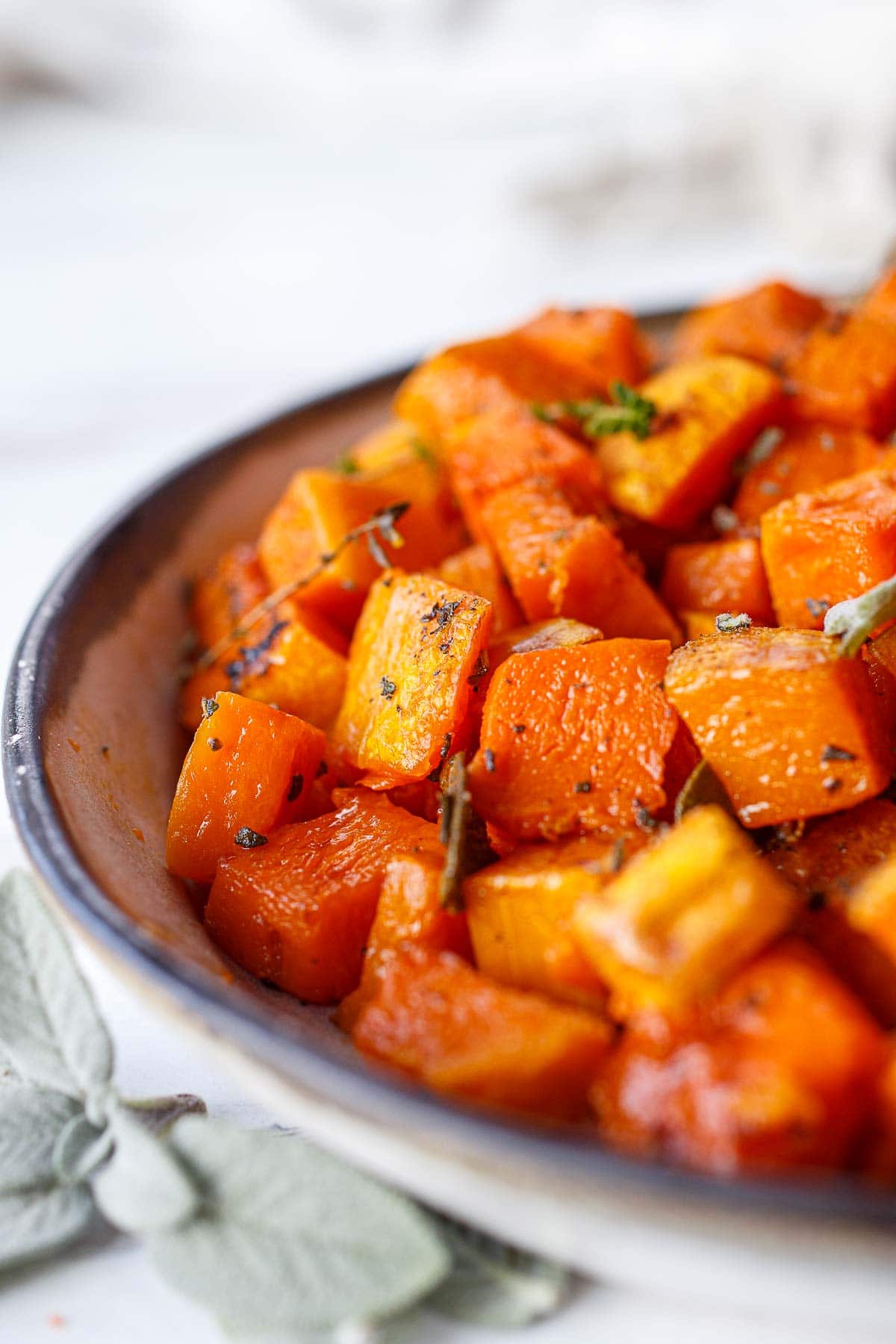
Butternut Squash Ingredients
- Butternut squash: When roasted, has a creamy and slightly sweet, caramelized flavor. Cubing it evenly ensures even roasting and a consistent texture.
- Extra-virgin olive oil: Helps promote caramelization during roasting. It adds richness and a touch of savory flavor to the dish.
- Maple syrup: This optional addition enhances the natural sweetness of the butternut squash, creating a caramelized and slightly glazed texture on the outside.
- Salt and Pepper: Enhances the overall flavor of the dish, balancing the sweetness of the squash and other ingredients. Salt also helps to draw out moisture from the squash, resulting in a more concentrated flavor.
- Fresh herbs: Adds an earthy and aromatic flavor to the roasted butternut squash. Sage leaves become crispy during roasting, adding a delightful texture and an herbaceous note to the final result. Alternatively, you can use rosemary or thyme for a different herbal profile.
- Optional additions: Ground cinnamon for warmth, ancho chili powder or chipotle powder for a smoky, spicy kick, orange zest for bright and citrusy notes, toasted hazelnuts or walnuts for crunchy and nutty flavor, or roasted cloves garlic for a savory and aromatic taste.
How to Cut Butternut Squash
Cutting butternut squash into cubes is easy! With a sharp knife, cut the ends off of the butternut squash. Peel the skin with a sharp vegetable peeler.
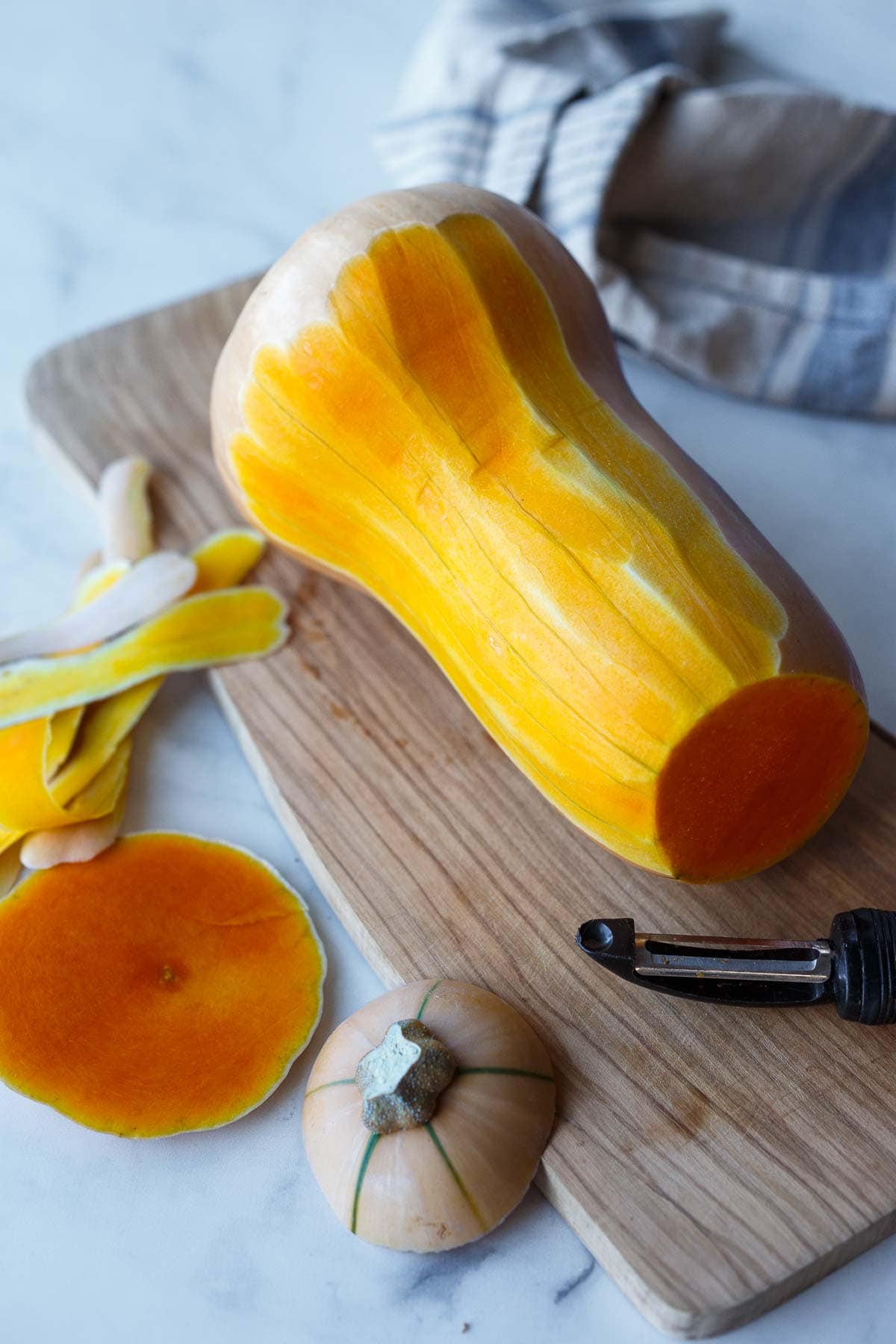
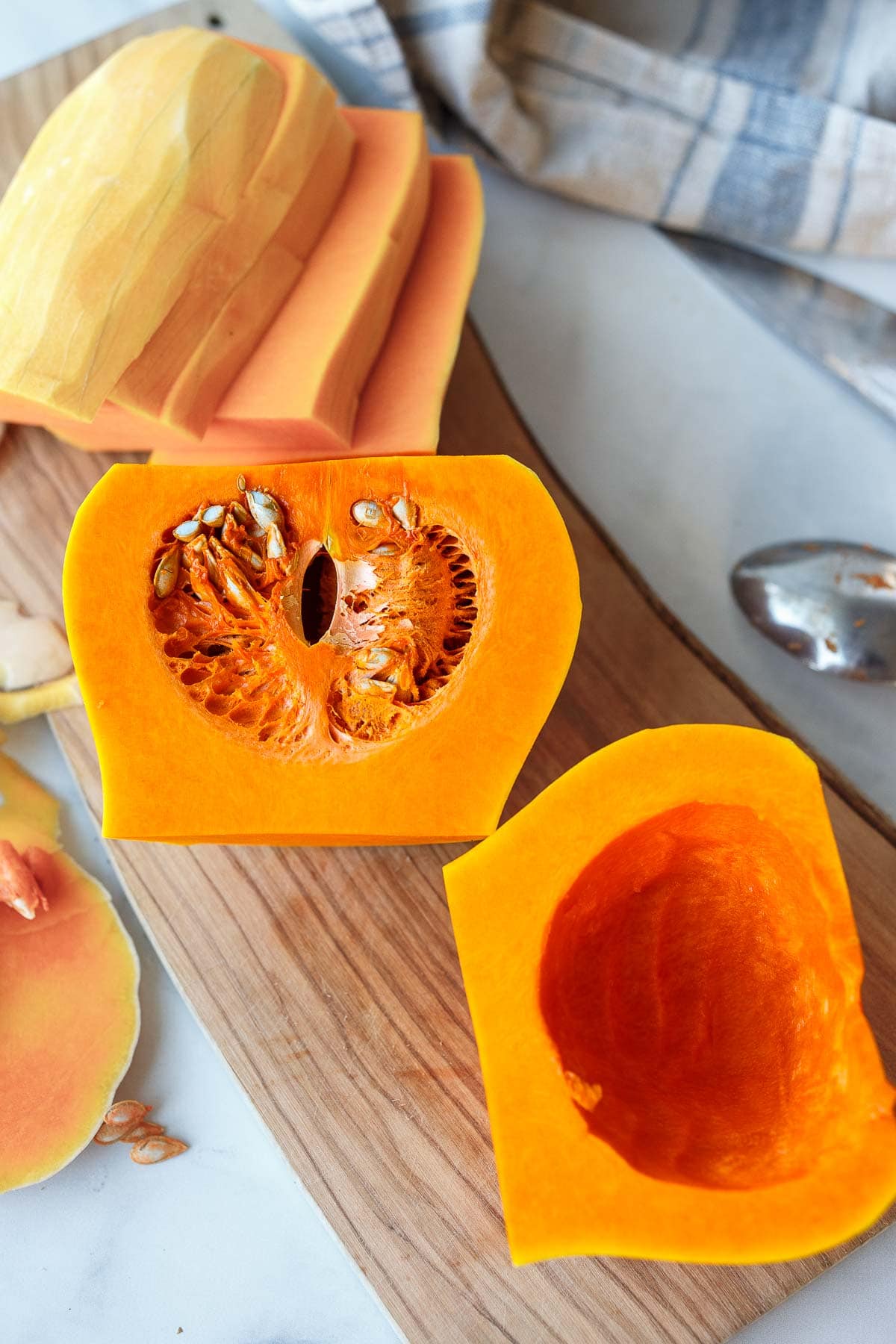
Slice the squash in half horizontally, separating the neck from the belly. Cut the squash sections vertically down the middle. Scoop out the seeds. Cut into 1-inch thick slices, then cut each slice into 1-inch cubes.
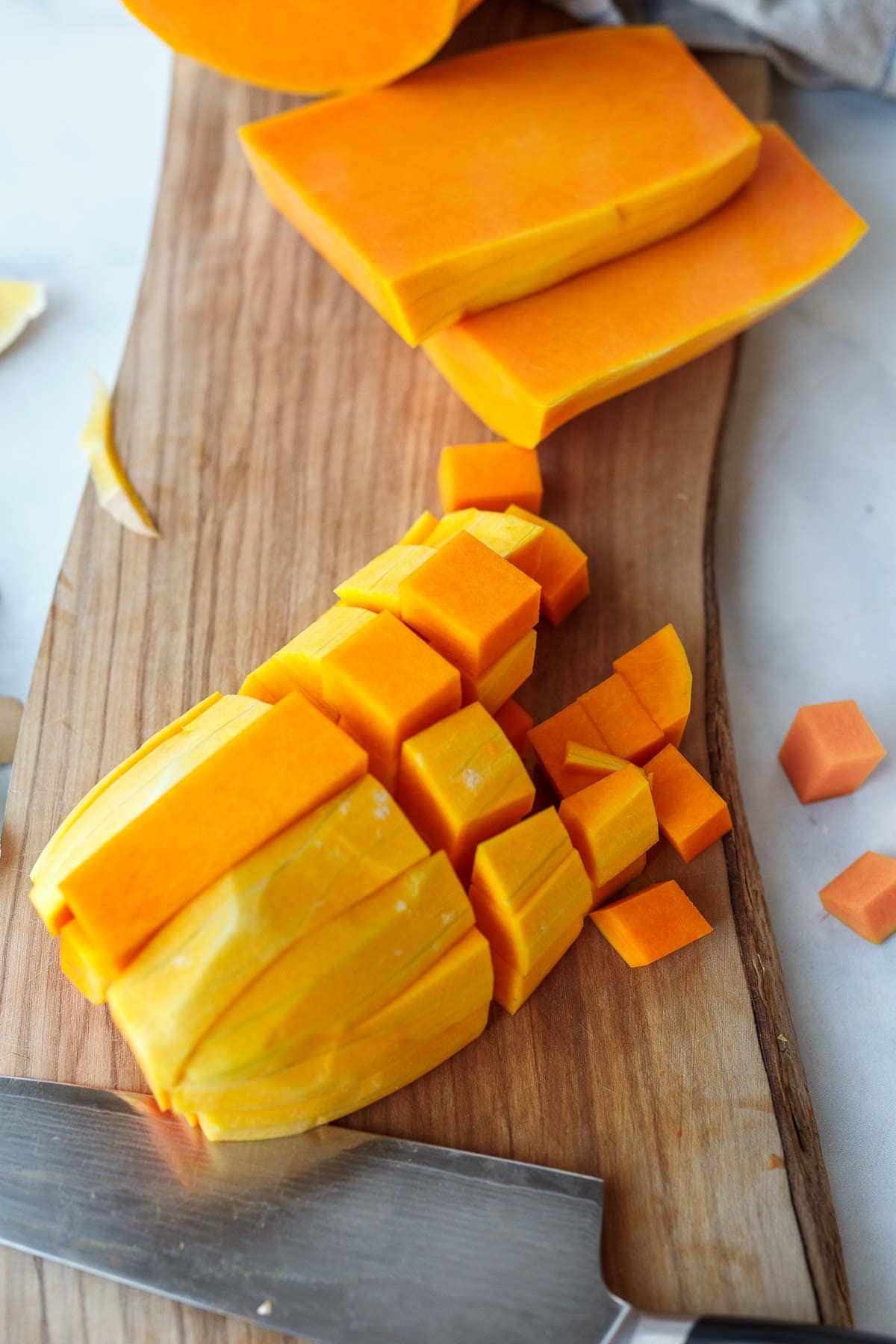
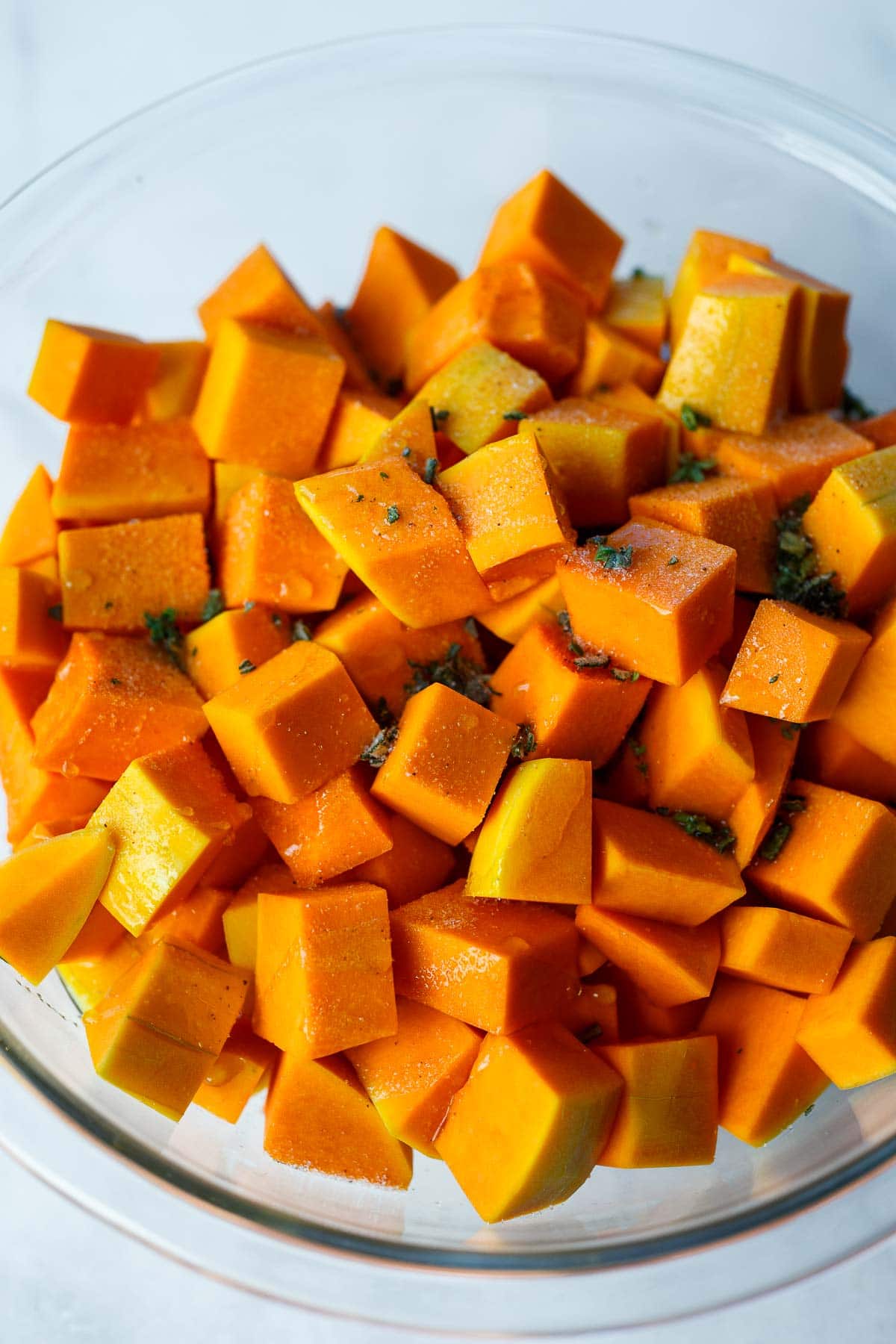
How to cook Butternut Squash
Roasting brings out the best in butternut squash! Toss cubed butternut in a bowl with olive oil, maple syrup, salt and pepper, minced sage, and whole sage leaves. Add any additional spices you desire. Make sure the squash is evenly coated.
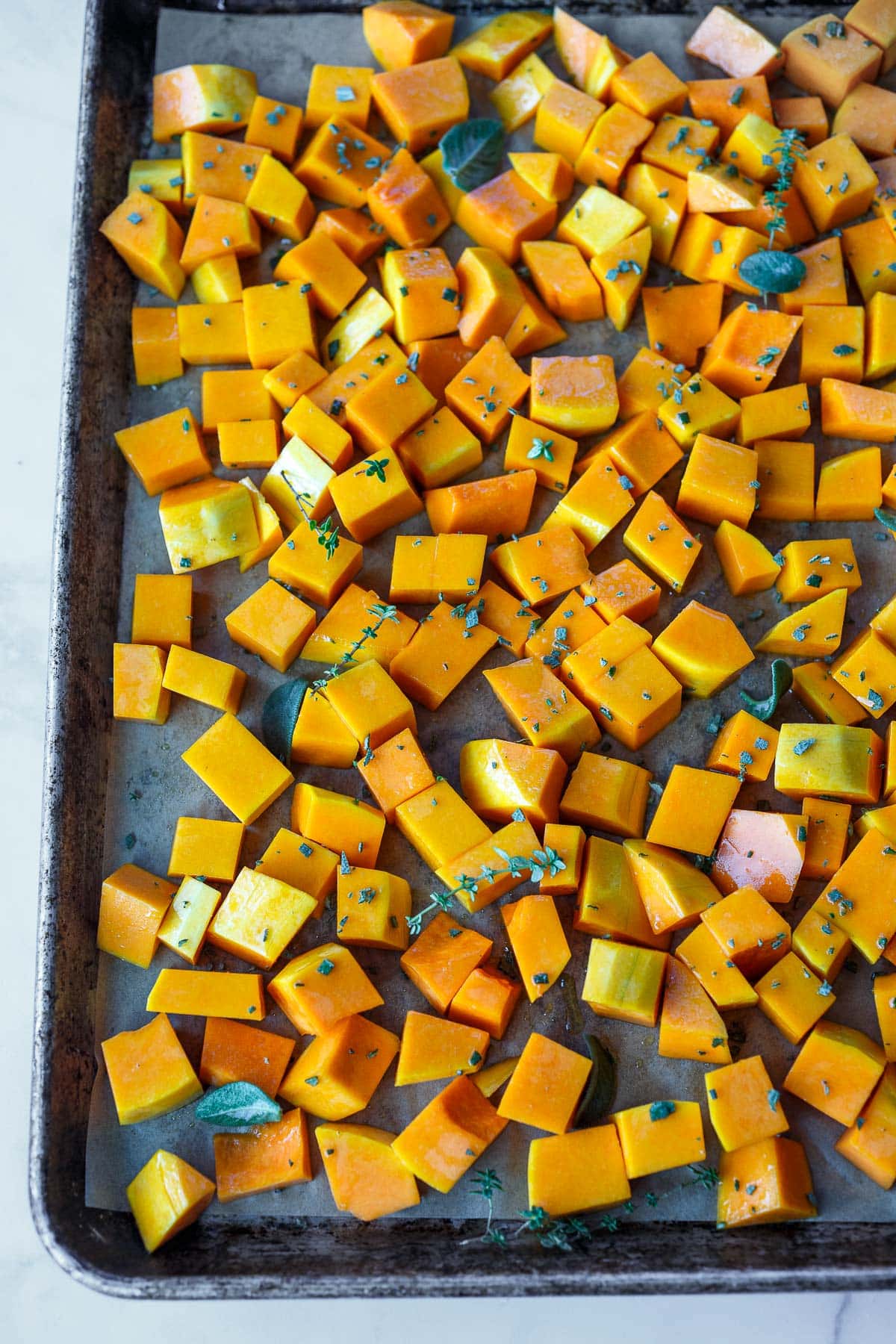
Place the squash cubes in a single layer on a baking sheet pan lined with parchment paper.
Bake in the oven at 425 degrees F for 35- 40 minutes, and give a stir after 20 minutes. Continue baking until soft, and fork tender and the edges start to brown.
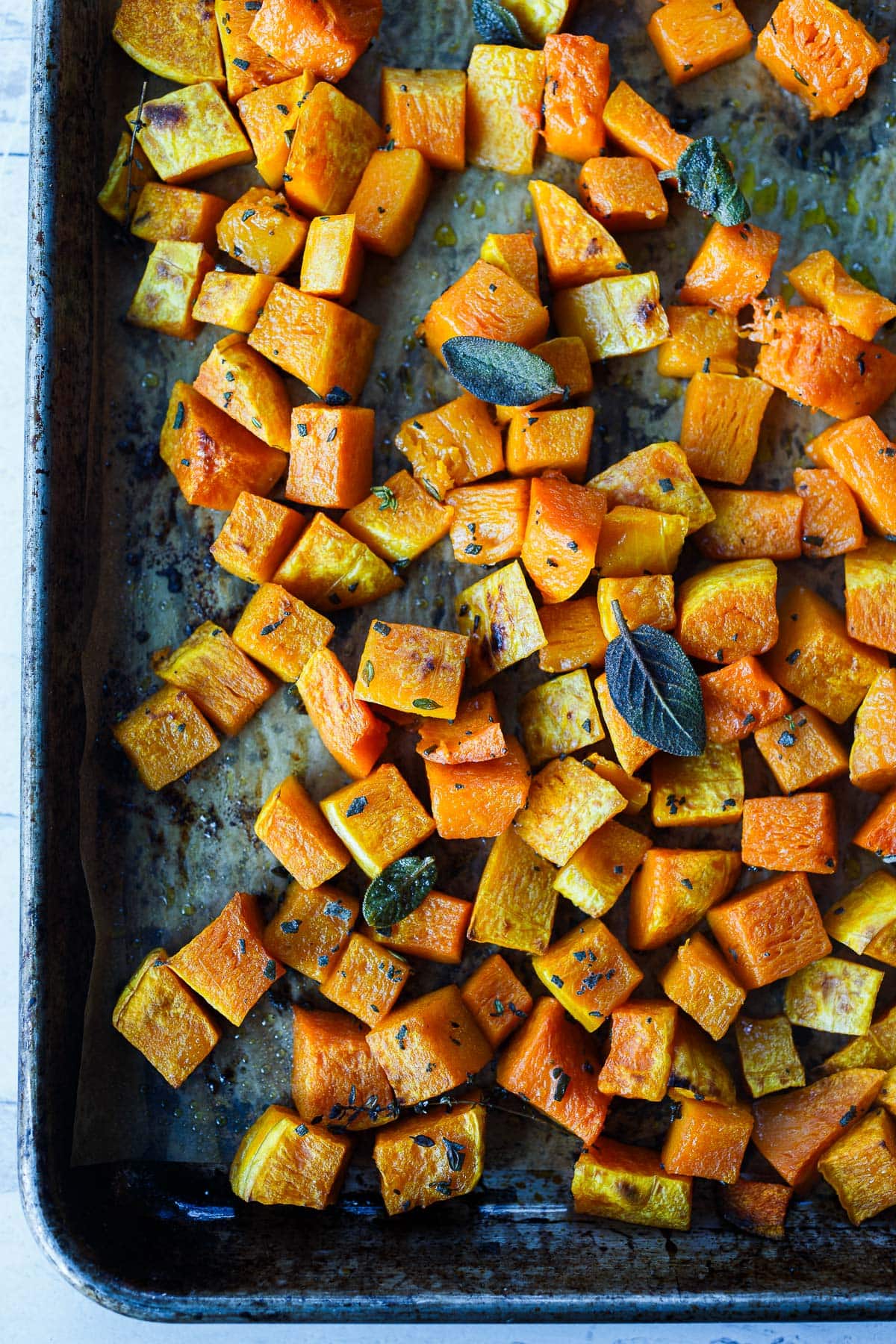
Melted butter adds extra richness when serving. Add a tablespoon of butter melting it into the warm squash. Ghee or brown butter works great too. For vegan use coconut oil or your favorite vegan “butter”.
Ways to use Roasted Butternut Squash
- Enjoy it on its own as a holiday side dish
- Add to a whole grains bowl or burrito bowl
- Toss with pasta or add to an orzo salad
- Add on top of a winter salad
- Add to a winter wrap or sandwich
- Add to soup
- Add on top of a bowl of risotto
- Enjoy for breakfast with roasted potatoes
- Add it to a winter pizza
- Blend it into hummus
- Add to tacos or enchiladas
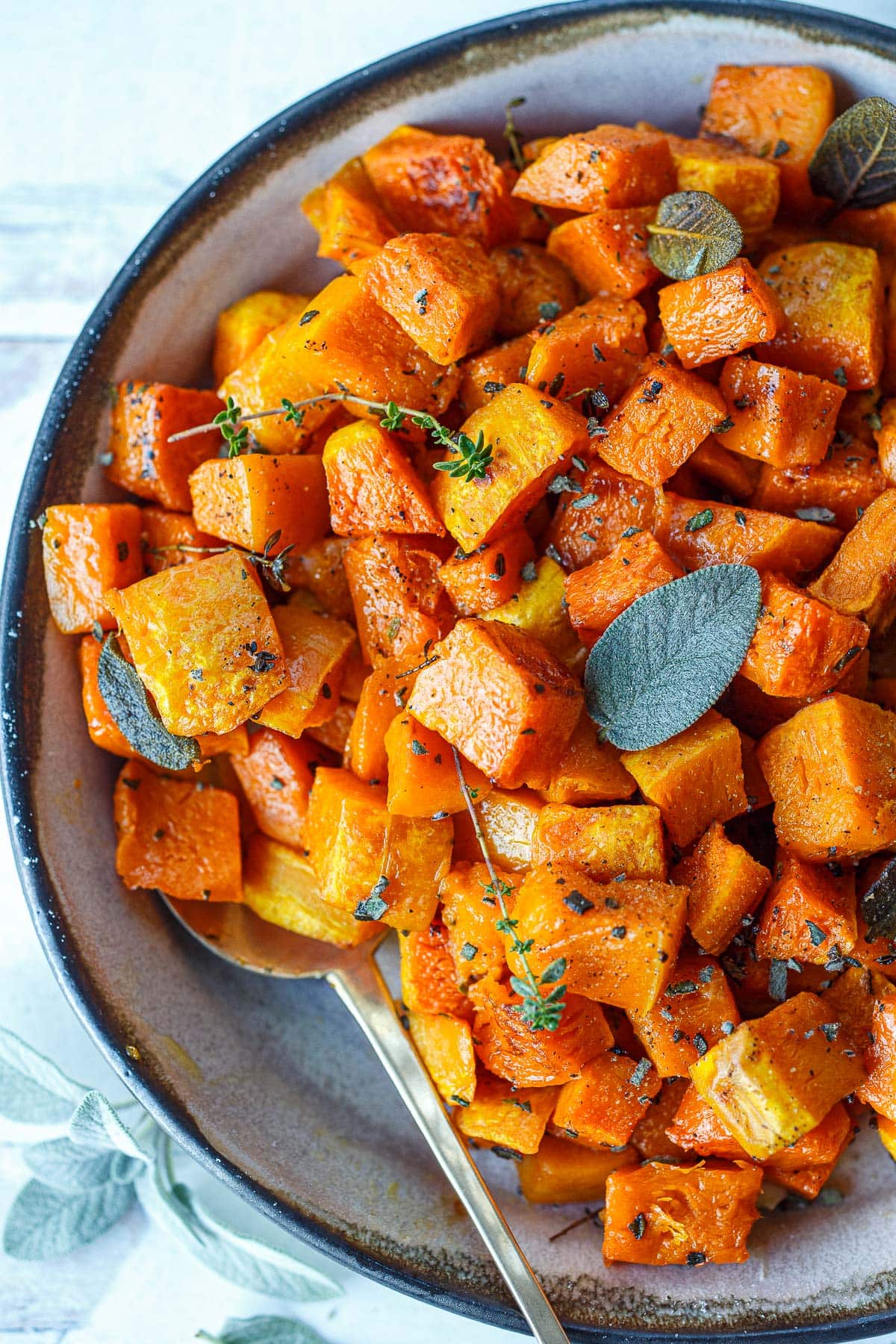
Health Benefits of Butternut Squash
Butternut squash is sweet and delicious and offers several health benefits!
- Nutrient-rich: Butternut squash is packed with essential nutrients. It is a great source of vitamins A and C, which support a healthy immune system, promote good vision, and assist in collagen production for healthy skin. It also provides minerals like potassium, calcium, magnesium, and manganese.
- Antioxidant properties: Butternut squash is rich in antioxidants, including beta-carotene, which gives it its vibrant orange color, much like sweet potatoes. These antioxidants help protect your cells from damage caused by harmful free radicals and may reduce the risk of chronic diseases.
- Promotes digestion: Butternut squash is a good source of dietary fiber, which supports healthy digestion.
- Supports heart health: The fiber, potassium, and vitamin C found in butternut squash can support heart health. Fiber helps lower cholesterol levels, while potassium helps regulate blood pressure.
- May boost eye health: The high levels of vitamin A and beta-carotene in butternut squash play a crucial role in maintaining eye health.
- Anti-inflammatory properties: Butternut squash contains various phytonutrients with anti-inflammatory properties. These compounds may help reduce inflammation in the body.
FAQs
When purchasing winter squash make sure the stem is intact. A squash with an intact stem is likely to be fresher and have a longer shelf life.
Yes, but it is very fibery and can have an unpleasant bitter flavor and fibrous texture.
To ensure even roasting cut the squash into even cubes. It also helps to stir the pan after about 20 minutes.
Yes! You can swap the butternut squash for acorn, honeynut, delicata, pumpkin or kabocha squash. However, spaghetti squash won’t work here.
Storage & Reheating
Leftovers can be stored in an airtight container in the refrigerator for up to 5 days. To reheat, place on the stovetop over low heat until warm, microwave, or reheat in the oven at 350F.
To freeze, place the squash on a baking sheet in the freezer until frozen. Then store for up to 3 months. Let thaw in the fridge before reheating.
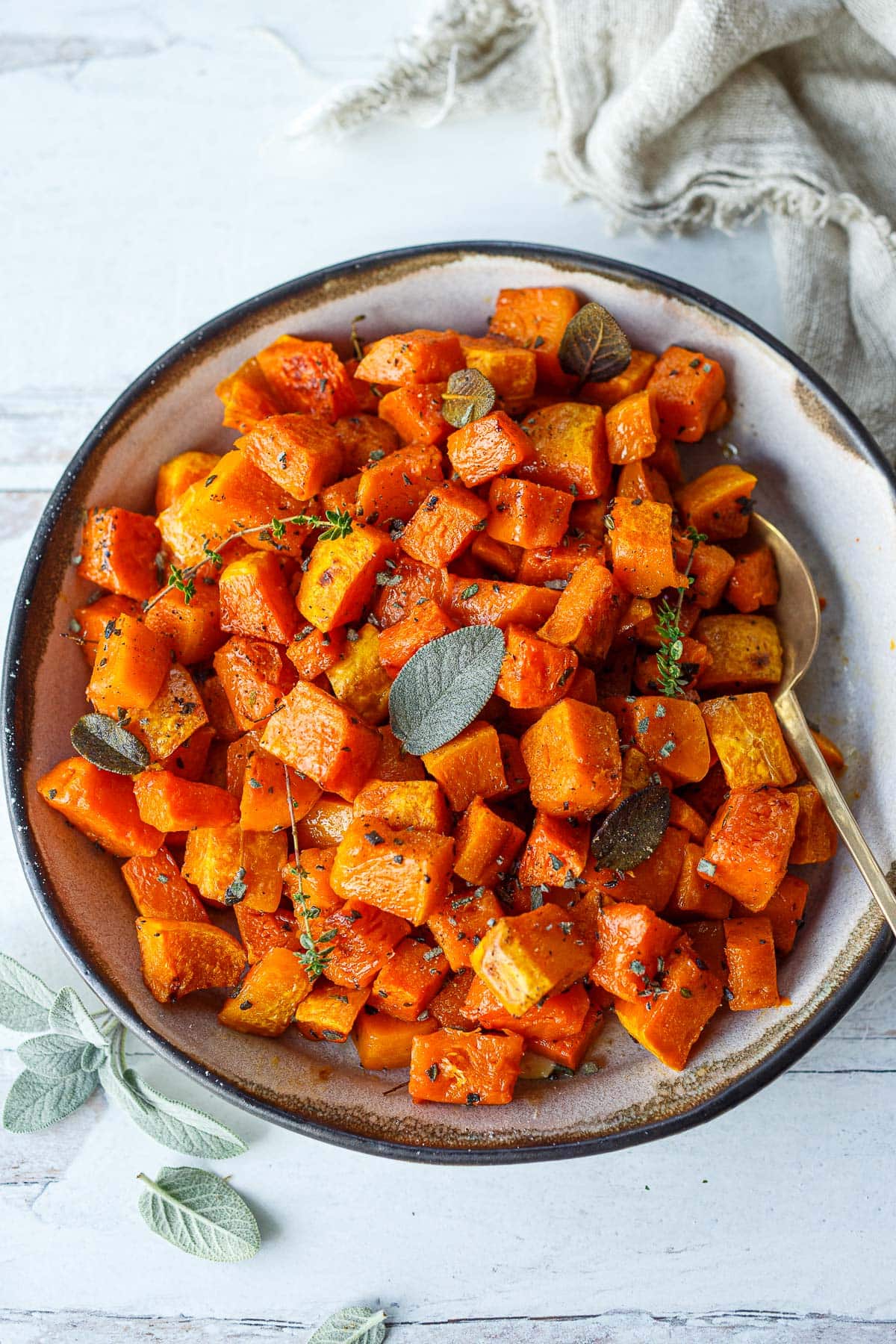
I hope you enjoy this Roasted Butternut Squash recipe! Let us know what you think in the comments below!
More Butternut Squash Recipes
- Butternut Squash Noodles
- Butternut Squash Dinner Rolls
- Baked Rigatoni with Butternut Squash and Kale
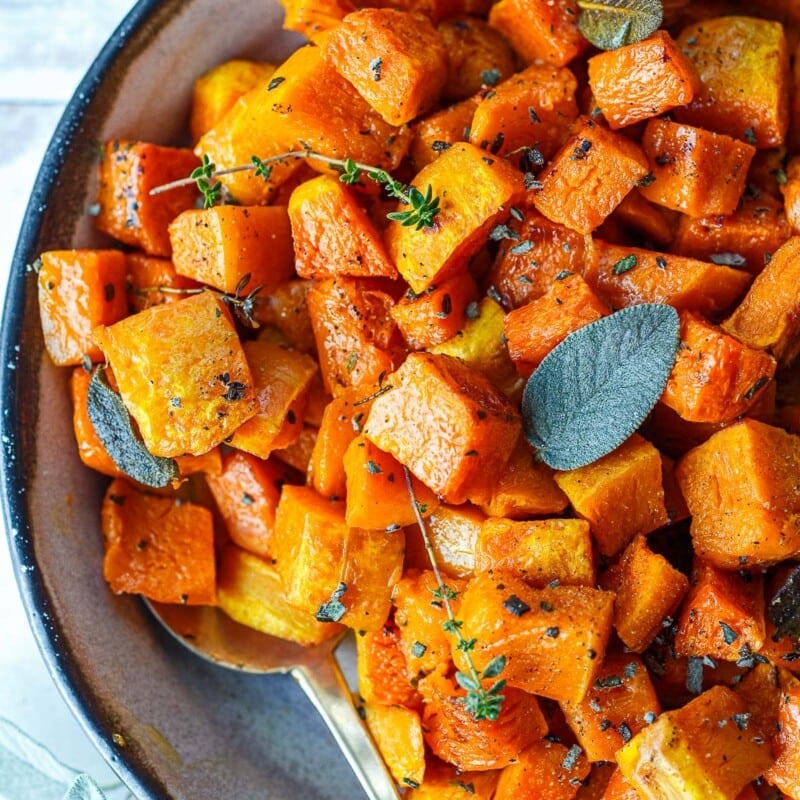
Roasted Butternut Squash Recipe
- Prep Time: 20
- Cook Time: 35
- Total Time: 55 minutes
- Yield: 4 1/2 cups
- Category: side dish, vegettable
- Method: oven
- Cuisine: American
- Diet: Vegan
Description
This Roasted Butternut Squash recipe is easy to make and packed with flavor. Learn the best way to cook butternut squash and enjoy it as a delicious side dish or nutritious addition to soups, bowls, pasta, and salads.
Ingredients
- 2 1/2 pounds butternut squash, evenly cubed (1 medium-sized butternut squash, 5 cups cubed)
- 2 tablespoons extra-virgin olive oil
- 1 tablespoon maple syrup (optional)
- 1/2 teaspoon salt (adjust to taste)
- 1/2 teaspoon ground black pepper (adjust to taste)
- 2 teaspoons fresh sage, minced- plus 6-8 whole leaves (the whole sage leaves get deliciously crispy in the oven) (can also substitute rosemary and thyme)
Optional additions to add before baking– 1 teaspoon ground cinnamon, 1/2- 1 teaspoon ancho chili powder, for a smoky spice kick 1/4-1/2 teaspoon of chipotle powder, 2 teaspoons orange zest, toasted hazelnuts or walnuts.
Instructions
- Preheat oven to 425F
- Cut butternut squash: With a sharp knife, cut the ends off of the butternut squash. Peel the skin (*see notes ) with a sharp vegetable peeler. Slice in half separating the neck from the belly. Cut the squash sections vertically down the middle. Scoop out the seeds and cut in 1-inch slices, then cut each slice into 1-inch cubes.
- Season: Place cubed butternut squash in a medium bowl and toss with olive oil, maple syrup, salt and pepper, minced sage, and whole sage leaves. Add any additional spices you desire. Make sure the squash is evenly coated.
- Arrange: Place the squash cubes in a single layer on a baking sheet pan lined with parchment paper (*see notes).
- Bake: Place on the middle rack in the oven for 35-40 minutes, give a stir after 20 minutes. Continue baking until soft, and fork-tender and the edges start to carmelize.
- Optional: For extra richness when serving, add a tablespoon of butter melting it into the warm squash. Ghee, or brown butter works great too. For vegan use coconut oil or your favorite vegan “butter”.
Notes
Though the skin is not toxic and considered edible once roasted, it is fibery and can be quite chewy, taking away the enjoyment of the tender squash flesh. We recommend peeling butternut squash.
Your choice on using parchment or not, it does make for easy clean-up and provides a barrier if using an aluminum baking sheet. However, the squash will brown more without the parchment paper giving more roasted caramelized flavors.
Nutrition
- Serving Size: 1 cup
- Calories: 182
- Sugar: 8.4 g
- Sodium: 135.4 mg
- Fat: 5.9 g
- Saturated Fat: 0.9 g
- Carbohydrates: 34.8 g
- Fiber: 5.6 g
- Protein: 2.8 g
- Cholesterol: 0 mg
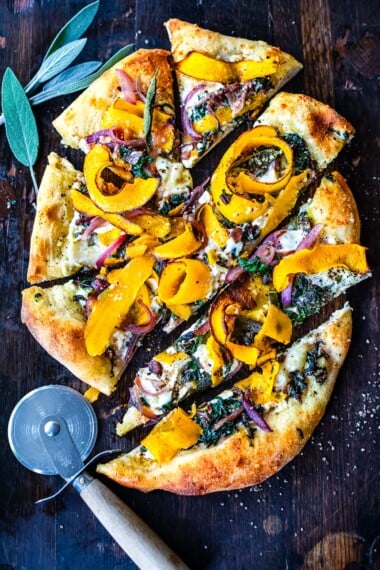
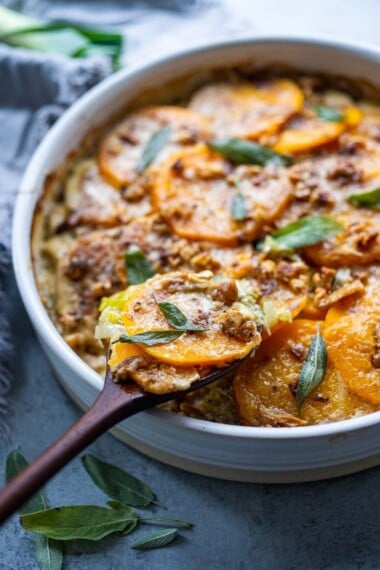
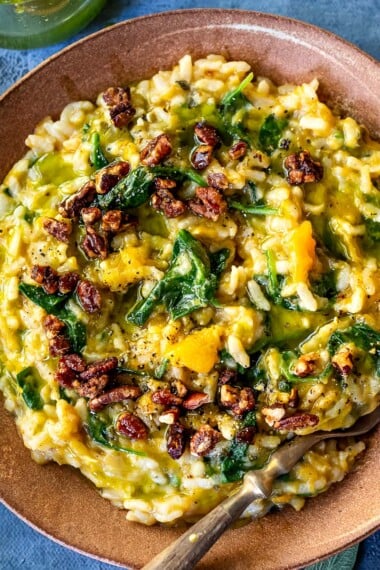
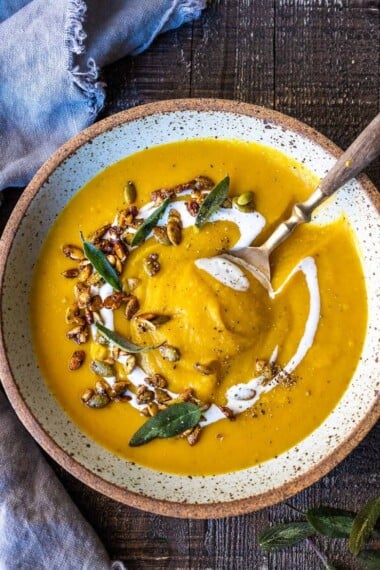

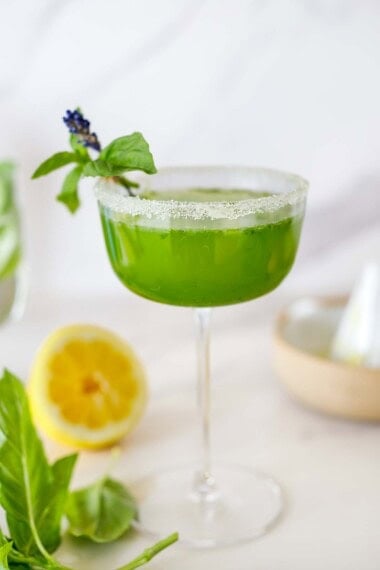
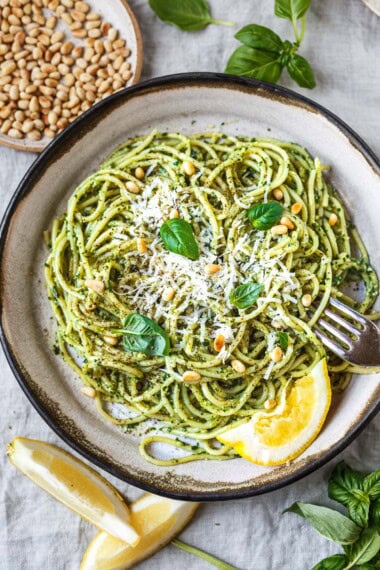
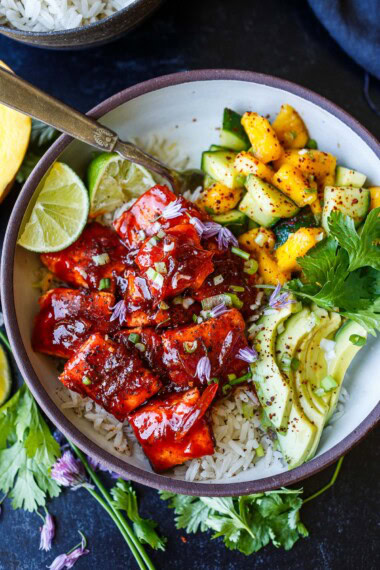
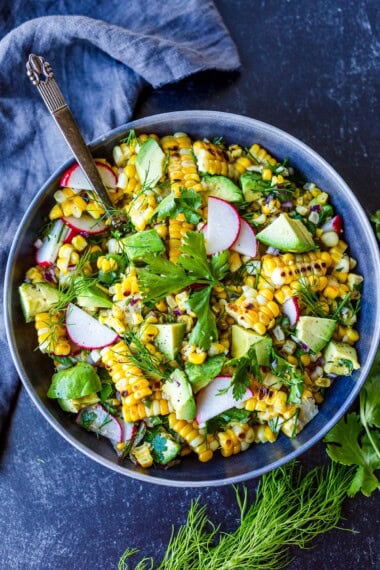
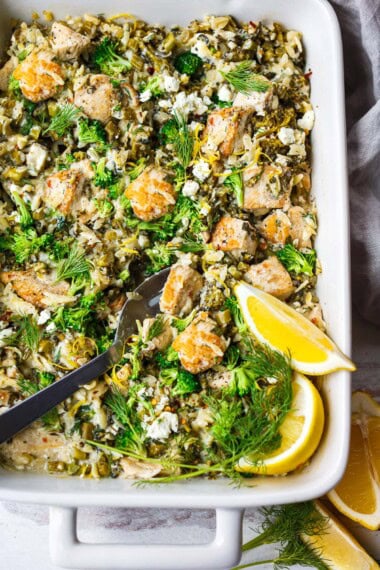
Peel and cube the squash early in the day and dinner prep is easy. We aim to try this in a salad, but haven’t managed to save any, it’s so good freshly roasted.
DELICIOUS! I was lucky to have grown my own Waltham Butternut Squash. They keep well out in the garage! COLD! I used two of them and made this recipe. WOW! Perfect side dish for our chicken dinner!
Yum homegrown! So glad you enjoyed.
Perfect to go with a roast turkey!
Nice! Great to hear.
As always, another delicious recipe and so versatile. I used it in a bowl with spicy salmon, avocado, rocket, edamame, beetroot and a base of quinoa cooked in stock. I used a simple dressing and it was superb.
Great to hear Jane!